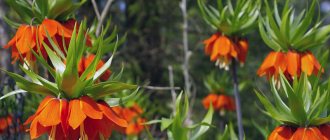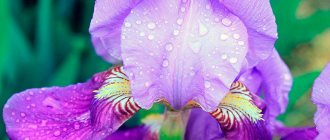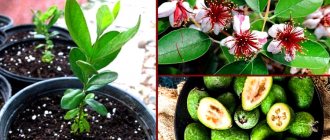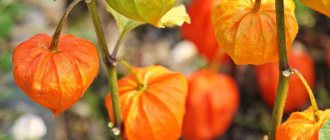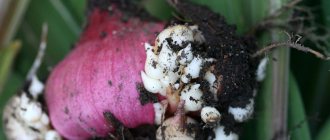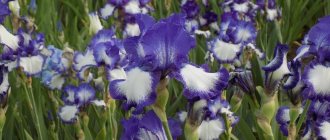Hyacinth is a very beautiful plant that can be grown both in open ground and at home. In its homeland, in Asia Minor, it begins to bloom during the period of warm rains, which is how it got its name. In order for the inflorescences and vegetative parts to fully form, it is necessary to dig up this flower every year, store the planting material in certain conditions, and also plant it in a timely manner.
- How to properly plant hyacinths in open ground in spring How to select and prepare bulbs
- Choosing a place for hyacinths in the garden
- Soil preparation
- Landing technology
- Planting hyacinths in spring: timing
- Cutting the bottom
How to select and prepare bulbs
Before growing hyacinth in the garden, it is important to learn how to select healthy and strong tubers. For planting in the ground or pot, take medium-sized hyacinths. They should be tight and without damage.
What do hyacinths look like?
The scales on the surface of the bulb should fit tightly to each other, their color should be darker than the color of the flower.
Important! An important indicator of a healthy bulb is the ratio of the size of the bottom to the bulb. It is 1 to 1.6.
How to determine the age of hyacinth by bulb size
| Bulb size | Age |
| 2-3 cm | Young, just formed from children |
| 4-5 cm | Adults producing good flower stalks |
| 6-7 cm | Old bulbs in need of renewal |
Before planting, the planting material is inspected and dried scales are removed. Immediately before planting, hyacinths must be disinfected in a weak solution of potassium permanganate or a commercial fungicide.
Variety of hyacinths
For gardeners, the most interesting classifications of hyacinths are based on the growing season and flower color. “Early” varieties bloom until mid-May, “middle” varieties – on May 15-23, “late” – in the third ten days of the month. Flowering of each group of plants lasts only a couple of weeks. The height of the peduncles varies from 20 to 35 cm, and the number of flowers - from 20 to 50.
Through the efforts of breeders, a wide range of hyacinth colors has been created.
The existing assortment includes varieties and hybrids with buds of the following colors:
- snow-white (“Antarctica”, “Carnegie”, “L’Innocente”, “Madame Sophie”);
- yellow (“City of Haarlem”, “Yellow Queen”);
- pink (“Delight”, “Anna Lisa”, “Rosalia”, “China Pink”);
- red (“Red Magic”, “Jan Bos”);
- purple (“Woodstock”, “L’Esperance”);
- purple (“Amethyst”, “Blue Pearl”);
- blue (“Blue Star”, “Sky Jacket”, “Azure”);
- blue (“Delft Blue”, “Aida”, “Blue Jacket”);
- black (“Midnight Mystic”, “Dark Dimension”).
In addition, flowers can have a simple or double shape and inflorescences of different configurations - from conical to ovoid.
When choosing crop varieties, the dimensions of the plants, the size and shape of the inflorescences are also taken into account.
Cultivating hyacinths is not particularly difficult and is accessible even to novice gardeners, and the variety of planting material on the market makes it possible to create beautiful spring compositions in almost any garden.
Choosing a place for hyacinths in the garden
Imperial hazel grouse: planting and care in open ground
To grow these flowers in the country or near the house, choose an open area protected from drafts. The plant should receive a lot of sunlight, but direct rays of the sun can harm it.
Hyacinth bulbs
Flowers can be planted under tall trees, but in this case more fertilizer will need to be applied. The flowerbed is placed on a hill or a slight slope. The ground surface is leveled.
Hyacinths grow well in soil rich in organic matter. The soil should be light and well permeable to moisture. The landing site is prepared 2-3 months in advance.
Important! Bulbs may rot in waterlogged soil. Therefore, in places with high water levels, hyacinths are planted in pots or drainage is used.
Hyacinth - brief description
Hyacinthus hyacinths are bulbous plants up to 40 cm high. Among the long narrow leaves grows a magnificent inflorescence consisting of a group of bell-shaped flowers with a wonderful, almost stunning aroma.
This is interesting! The name comes from the hero Hyacinth from Greek mythology. Hyakinthos was the son of the Spartan king Amyklas. The beauty of the young man attracted attention, but his beautiful appearance did not save him from fate. The young man died from a blow to the head with a disk. In the place where the blood mixed with the earth, a wonderful flower grew. When the flower bloomed, Apollo named the plant after the young man.
In our climate, hyacinths grown in open ground bloom from April to May; in warmer areas, the flowering period begins in February. One hyacinth blooms for 2-3 weeks.
Attention! The number of hyacinth flowers collected in an inflorescence depends on the size of the bulb. Therefore, when purchasing, they try to choose the largest bulbs. Healthy, large specimens make it possible to obtain up to 60 flowers in an inflorescence.
Hyacinth bulbs are quite large and covered with scales. Depending on the variety, they can be creamy, red, or purple.
Planting dates and soil preparation
When to plant hyacinths is of interest to many gardeners. It is better to do this in the fall in the last week of September - the first week of October. Planting earlier or later will result in the death of the plant.
Daffodils planting and care in open ground
2 months before the expected date of planting hyacinthus bulbs, prepare a flower bed. The selected place is dug to a depth of at least 40 cm, organic fertilizers (for example, humus or compost), potash and phosphorus fertilizers are added.
Sand should be added to heavy soils; lime, chalk or ash should be added to highly acidic soils. The prepared bed is covered with dark film or boards. This measure will prevent the appearance of weeds in the flowerbed.
How to plant hyacinths in the garden in spring
In spring, hyacinth bulbs are rarely planted. Most often, store-bought hyacinths are used for planting in open ground in spring. These flowers should be planted following these steps:
- When the hyacinth fades, the peduncle is removed.
- The plant along with the earthen lump is taken out of the pot.
- A hole is made in the previously prepared soil to the depth of the pot.
- Sand is poured into the bottom of the hole as drainage.
- Place the hyacinth bulb together with a lump of earth in the hole and cover it with soil.
- Water the plant around, being careful not to wet the bulb itself.
Important! Preparing the land for planting purchased hyacinth should begin immediately after the snow melts. The dug up soil must have time to settle.
If there is a threat of spring frosts, the planted flowers are covered with non-woven material.
Rules for planting hyacinths in autumn
In autumn, hyacinths are planted in late September - early October. Prepare a flower bed for planting at least 10 days in advance. After the soil has settled, holes are made for each plant. Sand is poured into the bottom of the recess and the bulb is placed. A sand cushion no more than 1.5 cm thick is made around it. Fertile soil is poured on top.
Important! The depth of planting the bulbs should exceed their height by 3 times. The distance between the holes is made equal to the planting depth.
After planting in dry soil, the plants are watered. If the soil is moist, then watering is not needed. You can also plant tubers in a common bed, but in this case more sand will be needed. It is more expedient to make individual holes for planting plants in a large flower bed. When all the plants are planted, the flowerbed is mulched with peat, straw or sawdust.
It is important to determine exactly when to plant hyacinths in open ground. If planted early, the plant will germinate and the young shoot will freeze. If you delay planting in the garden plot, the tuber will not have time to take root and will die when frost sets in.
How to plant hyacinths in spring
Planting hyacinths in spring requires some preparation. The first thing you need to do is inspect the corms and choose the right ones. It is important to correctly plan the location of a flower bed with hyacinths, taking into account the selection of neighboring flowers.
Attention! It is not recommended to plant bulbous plants in place of root crops.
Selection and preparation of bulbs for planting
The hyacinth bulb remains in the same place and produces new flowers every year. Proper planting and care will guarantee flowers for 5 to 10 years. Before planting, it is necessary to carefully inspect the corms. A good specimen will be smooth, strong, not covered with rot, mold or a rust-colored coating. You can plan a plot based on flowers before flowering begins, at the planting stage. Each bulb is the same color as the future flower, several shades darker. Particular attention should be paid to the scales. They should all be in place, without damage. The diameter of the bottom of the bulb is approximately 1.6 times smaller than the diameter of its wide part. If the bottom is larger, it means that the planting material was obtained as a result of a violation of technology or was dug up in adulthood. In any case, you shouldn't expect good escapes from him.
You cannot immediately transplant hyacinth into the ground after purchasing it. Before planting, the corms are kept in a weak solution of potassium permanganate for 12 - 14 hours. Next, they are immersed in a solution of mineral fertilizers and left until they swell. The light in the room is not important: the bulbs germinate well in both dark and light rooms.
Choosing a site for hyacinths
When choosing a location for a flower bed, you should consider the following parameters:
- humidity;
- illumination;
- protection from the wind.
Tender plants do not tolerate excessive moisture. The site must be well drained. On the contrary, flowers prefer a lot of sunlight; hyacinths should be planted in a place illuminated by the rays of the sun most of the day. Delicate flowers do not tolerate windy weather. It is not recommended to plant them on a slope, since the wind can damage the stems and inflorescences.
Soil preparation
Before planting, the soil must be lightened. Bulbous plants do not tolerate wet, clay soil. If the soil on the site is heavy, it needs a layer of additional drainage. Small pebbles, shell rocks or coarse sand are used as water drainage.
Landing technology
Hyacinths are large flowers; for good growth in the spring, they need to be planted correctly, leaving enough space between future plants. The distance between the bulbs is 15 - 30 cm. Planting depth depends on the soil. The lighter the soil, the deeper the bulb can be planted. In light soil, a hole is dug to a depth of p=3*h, where p is the planting depth and h is the height of the bulb.
The recommended planting depth for corms in heavy soil is calculated using the formula p=3*h-3, respectively.
A layer of sand should be poured on top and bottom of the bulb to prevent rotting of the bulb. The holes should be moistened before planting. A layer of fertile soil is added on top of the sand and watered.
How to propagate hyacinths at home
Hyacinths can reproduce both by seeds and plant parts. Planting seeds is used only for breeding purposes. This is a long and labor-intensive process. The vegetative method of propagation is most often used.
Ifeyon flowers - planting and care in open ground
When digging up bulbs for storage, you can find babies on them. Well-formed children are separated from the mother plant and stored separately. In autumn they are planted at the same time as adult flowers.
For your information. Babies on hyacinths are formed rarely and in small quantities, so other methods are used to reproduce them.
Cutting out the bottoms of hyacinth bulbs
The largest and healthiest bulbs are selected from the planting material. After clearing the soil, they are dried in a warm place for a week. After the roots have dried and can be easily removed, you can cut out the bottom.
To remove the bottom of a hyacinth bulb, use a scalpel, penknife or copulating knife. Some gardeners can carry out this operation with a teaspoon with a sharpened edge.
Important! Tools must be sharpened and disinfected.
Cut the bottom in the form of a funnel: from the outer ring to the middle. During the procedure, the outer ring and scales of the bulb must not be damaged. After processing, the sections are sprinkled with crushed charcoal, and the knife is disinfected.
The treated bulbs are placed in a box with damp sand with the cutout facing up. They need to be stored in a warm, dark place, covered with film. After 2-3 months, babies are formed; after a month they reach 10 mm in size.
When the children are formed, they are transplanted into the garden along with the mother bulb, deepening them so that there is a 10 cm thick layer of soil above them, and the planting is covered with mulch on top.
Notching the bottom
The next year, the mother bulbs and children are well fed, watered and weeded. Cover them thoroughly for the winter. A year later, at the end of July - beginning of August, they are dug up, separated from the large bulb and planted in a permanent place. Tubers obtained in this way bloom in the 3rd year.
Cutting the bottom of hyacinth bulbs
Cutting the bottom is simpler than the previous method of propagating hyacinths, but it produces fewer children. But they are larger than the children obtained by cutting out the bottom.
For this method, take young onions and dry them well. A cross-shaped incision is made at the bottom. Its depth should not exceed 0.6 cm. During the day, the sections are allowed to dry in a warm and dry place. The next day they are placed in a box with sand and germinated as in the previous propagation method.
How do hyacinths reproduce?
Hyacinths reproduce in open ground in various ways. All of them take a sufficient amount of time, but are not very labor-intensive.
- Cutting out the bottom;
- Notching the bottom;
- Scales from bulbs;
- Leaf cuttings.
Growing a new corm takes up to 3 years. However, from one corm you can get a large number of hyacinth babies, suitable for planting in open ground in the spring.
Cutting the bottom
The procedure is not complicated, just follow the algorithm:
- Remove the basal lamina from the bulb by cutting it with a curved scalpel.
- Then remove the shoot embryo and bud, exposing the part of the tuber that produces new bulbs.
- Treat the cut side with a fungicide to prevent disease and rot as new bulbs grow.
- Place the cut onion upside down in a dark, warm place for several weeks until the cut heals.
- You should wait until the new babies have grown their own roots before removing them from the mother bulb.
Notching the bottom
The technology for cutting the bottom is the same as the cutting algorithm, but it is simpler and faster. Instead of completely separating the bottom, propagation is carried out using cuts with a depth of 1/3, 1/4 of the depth of the bulb. If you keep them in a dry place, new bulbs will form at the cut sites. Over the course of 2 years, the sprouts will gradually transform into full-fledged tubers. Next in the spring, hyacinths are planted.
Scales from bulbs
Before separating the scales, it is necessary to prepare a nutrient substrate. Choose a light and nutritious mixture. Store-bought soil enriched with minerals will do. The procedure looks like this:
- Pour soil into the bag
- Moisten the soil. The humidity should not be excessive; it is enough to spray the peat with a spray bottle.
- Separate the scales from the bulb. Up to a third of future babies can be detached without harm to the mother tuber.
- Place the scales in peat.
- Place in a box and place in a dark, well-ventilated, warm place.
New corms form within two months. They will have their own root system, which indicates their readiness for replanting and further growth next year. In spring, you can plant young hyacinths in a pot.
Leaf cuttings
During the flowering period, it is necessary to cut off several strong, dense leaves. The leaves are placed in a greenhouse, where prepared soil is poured: a layer of peat, on top - a layer of sand of 2 - 3 cm. Future seedlings are kept moist for several weeks. The formation of a child can be monitored by observing the condition of the seedling. A yellowed and dead leaf means that the formation of a new corm has been successful, and soon the hyacinth can be planted in the ground.
Forcing in pots with soil
For forcing in winter, select large bulbs without damage. Only those grown in the garden are taken. Selected bulbs are planted in pots in October - November.
Important! The rest period for hyacinths lasts 10-12 weeks. This should be taken into account when forcing flowers by a certain date.
The soil for forcing is light. To improve breathability, it must contain sand. It is better to plant hyacinths in separate containers.
Pots with planted plants are covered with paper bags or other pots. You can use dark plastic bags with holes. Store planted hyacinths in a dark place at a temperature of 5-8°C for at least 10 weeks. When the soil in the containers dries out, water the plants moderately with cold water. The earthen ball should always be moist.
After the sprouts appear at the end of the dormant period, the covering is removed and the flower pots are transferred first to a room with a temperature of 10-15 ° C, then to a warmer and brighter room. Hyacinths begin to bloom 3-4 weeks after transfer.
Sprouted bulbs
Caring for hyacinth after forcing involves regular watering and fertilizing with mineral fertilizers for flowering plants.
Care after flowering and cleaning of bulbs
The flowering of hyacinths is magnificent, but fleeting. After the flower stalks dry out, the plant quickly loses its decorative effect. When the hyacinths have bloomed, what to do next in the garden? First of all, especially if the planting of spring bulbs is combined with some other ornamental crops, you need to note the location of the hyacinths. After all, soon, when the leaves droop, it will be extremely difficult to find them. Then, plants that regain strength after flowering need high-quality watering and fertilizing.
If in a Mediterranean climate the bulbs tolerate winter well and again delight with bright arrows of inflorescences, then in the middle zone of heat during the dormant period, hyacinths are clearly lacking. So, do you need to dig up hyacinths every year? Yes, it is precisely this measure in the middle zone that will help create the necessary conditions for the bulbs for the formation and development of the replacement bud and the rudiments of the future flower shoot.
If healthy hyacinth bulbs in a temperate climate, without being dug up for the summer, are left in the ground for the winter, their flowering next year will be much weaker than before. Only gardeners in the Kuban, North Caucasus, Crimea and southern Black Earth Region can avoid burdening themselves with the annual digging of bulbs, and then only when the summer is hot enough. When to dig up hyacinths after flowering in the garden?
The best time to remove the bulbs is the last ten days of June or the first days of July. By this time, the leaves have noticeably yellowed and weakened at the base; they will now be easy to remove.
Caring for hyacinths in the garden
Anyone who wants to grow them needs to know how to care for hyacinths. Hyacinth care is as follows:
- watering;
- feeding;
- weeding;
- loosening.
To prevent rapid evaporation of moisture and the germination of weeds, flower beds are mulched after planting. This measure will help avoid frequent loosening of the soil around the plants.
Watering
Hyacinths are sensitive to excess moisture. They need to be watered moderately and in small quantities. Frequently watering the bed with these spring flowers is necessary only during the period of bud formation and flowering. The rest of the time there is little watering.
Important! During watering, the soil in the holes should be saturated with water to a depth of 20 cm.
Fertilizers
Hyacinth bulbs live up to 7 years, so it is important to provide them with nutrients. Depending on the growth phase of the flower, different fertilizers are used.
In the spring, after the leaves appear, the flowerbed is watered with a solution of nitrogen-containing fertilizers. This could be urea or ammonium nitrate.
After the buds appear, fertilizers containing potassium and phosphorus are applied. For example, superphosphate and potassium chloride. After flowering is completed, superphosphate and ash are added.
Preparing for winter
After planting the bulbs in the garden, water the flower bed. If it rains a lot in the fall, then there will be enough natural moisture for hyacinths to take root. Preparing for winter involves creating optimal temperature conditions around the bulbs. Mulch is used for this. It can be made from compost, leaves or straw. The layer should be at least 20 cm. This will protect the tubers from frost.
In the conditions of Siberia and the Urals, the ground freezes more strongly than in central Russia. Therefore, hyacinth bulbs are dug up for the winter and stored until spring.
Growing hyacinths in open ground
It is highly advisable to prepare the soil in advance - dig to a depth of approximately 40-45 cm and add the required additives (depending on the composition and condition of the soil). Limestone (200 g), wood ash (150 g), superphosphate (50-70 g), magnesium sulfate (10 g) or potassium (20 g) are added at an approximate rate per 1 m² of land. To prevent the fragile young roots from being damaged during planting, digging up the soil at the site of the future flower garden is also important. When deepening the bulbs, the soil temperature should be approximately 8-11 degrees, the distance between the tubers should be no more than 10-15 cm. If flowers are planted in beds, then the row spacing should be approximately 18-22 cm. If you want different varieties of hyacinths bloom at the same time, make sure that all tubers are approximately the same size.
Hyacinth, photo of bulbs:
The area for the future flower garden is mulched with leaves or some other suitable material and covered with plastic film to retain heat. After the tubers are buried, the area is sprinkled with sawdust or peat, and it can also be covered again with foliage or coniferous spruce branches. Special covering material is perfect for these purposes. With the arrival of the first days of spring, the protective covering can be removed to make way for the hatching sprouts of hyacinths.
As mentioned above, the bulbs must be healthy, but if you are still afraid of fungal manifestations, you can first soak them in a fungicide solution.
The width and depth of the hole for the tuber should be equal to two of its sizes - approximately 15-25 cm, you can pour a little sand on the bottom, and then bury the tuber bottom down (about 13-15 cm). The bulb is sprinkled with soil, which needs to be lightly compacted and then watered.
The root system of the plant absorbs moisture and nutrients from the ground within a radius of approximately 20 cm from the tuber - this should be taken into account. Small onions should not be deeply buried; they should also be planted quite densely.
Replanting hyacinth after flowering or purchase
The plants themselves will tell you when to replant hyacinths. The signal to dig up the bulbs is yellowing and wilting of the leaves. Hyacinths should be removed from the ground carefully. The shovel is placed 10 cm from the flower and sunk into the ground to the full extent of the bayonet. The dug up bulbs are cleaned of soil and washed. After inspection, whole healthy specimens are left.
Selected plants are placed in a solution of potassium permanganate or foundationazole for disinfection. After processing, the tubers are dried. Before storing, remove dried scales from the bulbs. The prepared planting material is placed in boxes or bags and placed in a warm, dry place until autumn.
Healthy. To better preserve the bulbs, you can wrap them in newspaper.
The first month the bulbs are stored at a temperature of +25-30°C, in the following months it is lowered to +17°C.
How to care?
The growth and development of hyacinths is inhibited by weeds, so it is recommended to weed them regularly. It is also necessary to systematically loosen the soil around the plant. Watering is carried out only during periods of drought . Water must penetrate to a depth of at least 20 cm.
Attention ! Reducing the number of watering, weeding and loosening is achieved with the help of mulch.
Fertilizer
For normal growth of hyacinths, the plant must be fertilized periodically. During the growing season, the plant needs to be fed 2-3 times. Fertilizer can be either dry or liquid. Before adding the nutrient solution, the flowers need to be watered. And after applying dry fertilizer, distribute the substance with a hoe over the entire area.
Feeding time:
- beginning of the growing season - 20-25 g of nitrate and 15-20 g of superphosphate per 1 m2;
- formation of buds - 30-35 g of superphosphate and 15-20 g of potassium sulfate per 1 m2;
- after the bushes fade - 30–35 g of potassium sulfate and the same amount of superphosphates per 1 m2.
Transfer
In the summer, after the bushes have faded, the bulbs need to be dug up and stored . Then they need to be planted in the fall. After a couple of months, the bulbs need to be dug up again so that they recover after the growing season and flowering.
Storing hyacinth bulbs
Storage varies for purchased flowering plants and those grown on site. In the first case, after flowering, the peduncle is cut off. If the plant grew in a small container, then it is transplanted into a larger pot. After trimming the peduncle and replanting, the hyacinth is placed in a cool, well-lit place. It can be placed close to the window glass. There he will have enough light and the temperature will be low.
Hyacinth should be watered sparingly during storage. In May - June, the preserved bulb is transplanted into a flower garden.
Storage option
Plants growing in the garden are dug up after flowering and replanted in the fall before winter. In summer, the bulbs are stored in a cool, dark room.
Hyacinths in landscape design, photos - examples of flower bed design
Hyacinth flowers are among the most popular garden plants. This is due to the richness of the flowers and ease of cultivation. Planted in groups of the same color, these beautiful flowers create impressive colorful displays in flower beds. They also look good in pots and wicker baskets.
Photo. Flower beds and flower beds with hyacinths
When planning a large flower bed, it is worth planting hyacinths in groups - several, a dozen or so bulbs of the same variety. Flowers will create spectacular, colorful islands.
By choosing flowering varieties at the same time, you can achieve the effect of a patterned carpet or scarf.
Hyacinth is a wonderful decoration for any garden, summer cottage, or small flower bed. The plant is easy to grow, planting the bulbs does not involve any special measures, caring for the shoots is simple, regular watering is required, especially during periods of drought. These extremely beautiful plants are probably a favorite in the spring, producing extremely gorgeous blooms that are intensely colored and fragrant. It's no wonder that many people want to grow this charming bulbous plant in the garden or in pots at home.
Main pests and diseases of hyacinths
Growing and caring for hyacinth in open ground is impossible without knowledge of pests and flower diseases.
Collection of pests and diseases of flowers
| Pest/Disease | Signs | Treatment method |
| flower fly | Growth slows, leaves wither | Treatment of plants with the preparations “Mukhoed”, “Aktara” or “Tabazol” |
| Aphids and thrips | Leaves turn yellow, flowers do not develop and fall off | Hyacinth care involves treatment with afficide |
| Medvedka | The plant withers, the dug up bulbs are severely damaged | When planting, corrugated sheeting or slate 20-25 cm wide is buried around the flower bed. |
| Apical flowering | A short inflorescence is formed, the upper flowers bloom before the lower ones | Compliance with storage temperature conditions |
| Peduncle tip rot | The top of the peduncle rots during germination | Grow at lower temperatures |
| Yellow bacterial rot | Yellow spots appear along the veins on the leaves and peduncle. The same spots form on the bulb, gradually rotting | Destruction of bulbs, treatment of soil with bleach. It will be possible to plant hyacinths in this place only after 3-4 years. |
| Soft bacterial rot | The plant turns yellow, does not develop, and withers. The bulb is rotting | Store and grow at low humidity, dry the bulbs well. Affected bulbs are destroyed |
Planting and caring for hyacinths in the open ground, which require knowledge of the characteristics of cultivation, will bring many pleasant moments. Following the rules for growing hyacinths, caring for them and storing them will allow any gardener to decorate his plot with beautiful caps of hyacinths.
Diseases and pests of hyacinths
Hyacinth is not rot resistant. It is necessary to strictly regulate watering, otherwise there is a danger of losing all the corms.
Tubers may be damaged by insects. Bulb mites are almost invisible. Hundreds of pests feed on the dry and crumbly pulp of one flower. Infected bulbs become hard and light chocolate brown in color. Damage from mites opens the door for other pests and diseases. All affected bulbs must be destroyed. Contacted tubers in a dormant state are soaked in hot water (40 to 50 ° C) for 3 hours.
Many species of rodents also enjoy eating hyacinth bulbs. You can protect your plantings by throwing a handful of gravel into the planting hole or try special rodent repellents. An easier method is to mix hyacinths with daffodils, which animals avoid.
When to plant hyacinths?
The optimal time for planting hyacinths is late September - early October. If you plant plants ahead of schedule, they will quickly begin to grow and die from frost. And if you are late with the planting time, the bulbs will not have time to take root before the soil freezes.
If you decide to plant hyacinth bulbs later (late October - mid-November), be sure to mulch the planting site with compost, spruce branches or fallen leaves.
For good flowering, the correct planting location . It is advisable to plant heat-loving hyacinths where there are no drafts but plenty of sun. In addition, it is better to protect hyacinths from soil that is too wet - the plants can rot.
Hyacinth flower - description
The perennial hyacinth has a dense bulb, consisting of lower, fleshy leaves that occupy the entire circumference of the bottom, the direct continuation of which is the peduncle. A racemose inflorescence of brightly colored bell-shaped flowers with bent perianth lobes is formed on the stem. After flowering is completed, the stem and the green leaves sitting at the very bottom dry out, but a bud forms in the corner of the upper leaf, which will become a bulb and produce a peduncle next season. Bulbs can also form in the corners of other hyacinth leaves, which can be separated and grown so that after a few years they also throw out flower shoots. The hyacinth fruit has the appearance of a leathery three-lobed capsule, in each nest of which two seeds ripen.
Types and varieties of hyacinths
Today, as a rule, there are only 3 varieties of hyacinths:
- Oriental (Hyacinthus orientalis);
Variety Splendid Cornelia - Litvinova (Hyacinthus litwinowii);
- Transcaspian (Hyacinthus transcaspicus).
The most famous and suitable for growing in our gardens and at home in pots is the oriental hyacinth.
Variety Carnegie
There is a fairly large number of varieties of the oriental variety, which in turn are divided by size, color and color of flowers (white, yellow, red, pink, blue, purple, blue, etc.), as well as by flowering time in early-mid - and late flowering, with the difference between their flowering being only one to one and a half weeks. Therefore, if you do not have the opportunity to arrive at the dacha early to catch them blooming, it is better to choose late varieties.
Will the hyacinth bloom?
Those who prefer to throw away bulbs that have been forced are partly right. We are often sold Dutch selection hyacinths in pots; they are characterized by poor winter hardiness. And if there is no flowering the next year, the bulb is probably dead.
But don't rush to get upset. Numerous experiences of amateur flower growers (just like you and me) have been able to achieve flowering of forced bulbs! It’s just that very often (and most likely) it’s not the time yet. Forcing is a lot of stress for the plant. Usually the next year the plant rests, gains strength, and blooms only two years after forcing (that is, in the spring).
How to handle hyacinth “babies”?
If during transplantation “babies” are found on the main bulb, it is necessary to separate them. Small ones must be left on the mother bulb until next year, otherwise they will not be able to sufficiently acquire nutrients and will simply dry out.
The separated children are grown in pots for 2–3 years. After this period, the bulbs reach full development and are ready for forcing in pots.
Popular types of hyacinths
- Eastern hyacinth. It has a strong and pleasant smell. The wild species grows in Turkey and Siberia.
- Litvinova. Grows up to 25 cm. Produced in Turkmenistan and Iran.
- Transcaspian . Height up to 20 cm. With 4-10 flowers. Grows in the mountains of Turkmenistan.
- Innocence . Height up to 25 cm. Originated in 1863.
- Edelweiss. Up to 25 cm.
- Lady Derby. Has 37 flowers. Originated in Holland in 1875.
- Marconi . With a purple tint.
- Bismarck . High up to 30 cm. Made in Germany.
Bismarck
Marconi
Lady Derby
Edelweiss
Litvinova
Oriental
Innocence
Transcaspian

